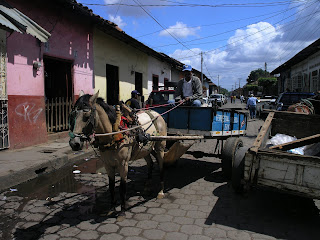
3/22/09
Rancho Esperanza 2009

Estero Padre Ramos 2009

Estero Padre Ramos 2009
The silence of a Kayak is conducive to seeing the wild life in the Reserve. The Padre Ramos is home to approximately 150 dispersed families who rely on the Estero's resources for their livelihoods. The bird life in the Estero is spectacular. The Estero is home to more than 175 species of birds.There are also other types of flora and fauna, including 4 different species of mangrove, 3 species of sea turtles (Olive Ridley, Hawksbill and Leatherbacks), American Crocodiles, iguanas, conch, clams, and fish galore.
The silence of a Kayak is conducive to seeing the wild life in the Reserve. The Padre Ramos is home to approximately 150 dispersed families who rely on the Estero's resources for their livelihoods. The bird life in the Estero is spectacular. The Estero is home to more than 175 species of birds.There are also other types of flora and fauna, including 4 different species of mangrove, 3 species of sea turtles (Olive Ridley, Hawksbill and Leatherbacks), American Crocodiles, iguanas, conch, clams, and fish galore.
3/19/09
Volcano Cosiguina 2009

about a three hour climb from Potosi.We left early in the morning just before
sunrise to take advantage of the cool temperatures as we hiked up through the
cow fields and forest to the top of the volcano. 1800 feet below the rim is a
emerald crater lake.
Cliffs and Bird Islands of the Fonseca Gulf 2009

Cliffs and Bird Islands
This show is about a trip in a small fishing boat up along the Pacific Coast to the Northwestern tip of Nicaragua.
There lies the Cosiguina Volcano on a Penninsula which is 3/4's surrounded by the Pacific Ocean and the Foncesa Gulf. Stunningly beautiful 175 ft tall lava cliffs face the Ocean at the tip and Ocean going bird islands are in the Fonseca Gulf.
8/8/08
Cliffs of Cosiguina 2008

Cliffs of Cosiguina
You could see from the plane as we flew down the northern coast of Nicaragua the enormous cliffs that presented themselves at the end of the Cosiguina Peninsula where it meets the Fonseca Gulf. The question was, how were we going to get to this very remote part of Nicaragua? Some of the maps show dirt roads going up the peninsula to the end -------
Children of Nicaragua
 Children of Nicaragua
Children of NicaraguaSan Juan Del Sur / Ometepe Is. 2004

San Juan Del Sur-- Ometepe Island
San Juan Del Sur because of its close proximatry to Costa Rica became the first location in Nicaragua to be "discovered" by foreign tourists. Set on the Pacific in a horse shoe shaped cove it is the gateway to many beautiful beaches north and south . Ometepe Island is made up of two connected volcanos sitting in the middle of Lake Nicaragua. It's remoteness has let it retain the old ways of Nicaragua
Leon, 2008

Leon, Nicaragua 2008
Leon, is the second largest city in Nicaragua. Originally it was the old colonial and Political capital and still retains much of the flavor of 100 years ago. Numerous old Churches dating back to the 16th Century,and old Spanish architecture. It lacks the quick pace and frantic lifestyle Of Managua. The old culture of Nicaragua is being retained in Leon.
Playa Jiquilillo,2008

Playa Jiquilillo 2008
A long wide beach on the Northwestern side of Nicaragua facing the Pacific Ocean. Still a very primitive fishing village with limited acommodations, friendly people and a very relaxed life style where time slows and you can readily feel your place in the Universe. Very dark at night which only tends to increase the Moon and star light. Just say AAAH.
Subscribe to:
Comments (Atom)



